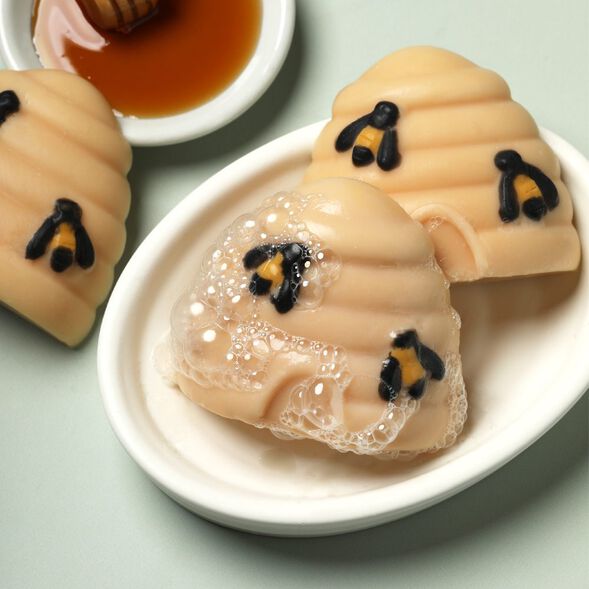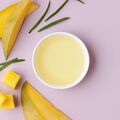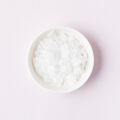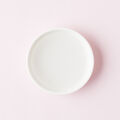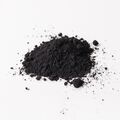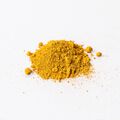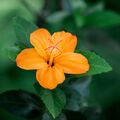
Triple Honey Soap Project
- Skill Level: Intermediate
- Time: 2 hours
- Yield: About 13 ounces of soap
Project Description
Why add honey to your soap? The natural sugars in honey increases lather. It's also a humectant, which means it helps to draw moisture to the skin. Learn more about using honey in bath and body products here.
Created in the Beehive Silicone Mold, a touch of black and yellow oxides bring the bee details to life. You only need about 1 tablespoon of soap to fill the details - we like using a dowel or chopstick to spread the soap into the small details.
You will need:
- 6 Cavity Beehive Silicone Mold
- 10 oz. Gentle Quick Mix
- 1.4 oz. Sodium Hydroxide Lye
- 2.2 oz. Distilled Water (decreased to account for honeyquat)
- 1 oz. Honeyquat
- 0.5 oz. Honey and Hibiscus Fragrance Oil
- 0.2 oz. Honey
- Black Oxide
- Yellow Oxide
FRAGRANCE OIL PREP + ADDITIVE PREP: Measure 0.5 ounces of Hibiscus and Honey Fragrance Oil into a glass container and set aside. Measure 1 ounce of honeyquat and set aside.
COLORANT PREP: Disperse 1/2 teaspoon of black oxide into 1/2 tablepoon of a lightweight liquid oil, such as sweet almond oil or avocado oil. In a seperate container, disperse 1/2 teasppon of yellow oxide into 1/2 tablespoon of lightweight liquid oil. Use a mini mixer to get rid of clumps.
SAFETY FIRST: Suit up for safe handling practices. That means goggles, gloves, and long sleeves. Make sure kids, pets, other distractions, and tripping hazards are out of the house or don’t have access to your space. Always make soap in a well-ventilated area.
Follow these steps:
1
Slowly and carefully add 1.4 ounces of lye to 2.2 ounces of water and gently stir until the lye has fully dissolved and the liquid is clear. Set aside to cool. Optional: Add 0.5 teaspoons of sodium lactate to help the bars harden more quickly.
2
Microwave the bag of Gentle Quick Mix until it’s completely clear. Shake to mix up all the oils. Measure 10 ounces into your soaping bowl. Once the lye water and the oils have cooled to 130° F or below (and are ideally within 10 degrees of each other), add the lye water to the oils and stick blend the mixture to a thin trace.
3
Add 1 ounce honeyquat to the soap batter and whisk in completely.
4
Remove a small amount of soap batter into two small containers - about 1 tablespoon of batter per container. Add drops of dispersed yellow oxide and mix in until you're happy with the color. To the other small container, add drops of the dispersed black oxide until you're happy with the color.
5
Use a chopstick, dowel, or other utensil of choice to place the black soap into the head and wing details of each bee cavity. Place yellow soap in the body, and a bit of the black soap to the bottom of the bee details. Work efficiently and give the main batch of soap a whisk occasionally to keep the batter fluid.
6
Whisk in 0.5 ounces of the Hibiscus and Honey Fragrance Oil. Add 0.2 ounces of honey and stick blend in quickly. Pour or spoon the soap batter into each mold cavity. Use a spatula to smooth the back of each cavity.
7
Allow the soap to harden in the mold for 1-2 days. Release from the mold and allow to cure for 4-6 weeks. Enjoy!

Triple Honey Soap Project
- Skill Level: Intermediate
- Time: 2 hours
- Yield: About 13 ounces of soap
Project Description
Why add honey to your soap? The natural sugars in honey increases lather. It's also a humectant, which means it helps to draw moisture to the skin. Learn more about using honey in bath and body products here.
Created in the Beehive Silicone Mold, a touch of black and yellow oxides bring the bee details to life. You only need about 1 tablespoon of soap to fill the details - we like using a dowel or chopstick to spread the soap into the small details.
You will need:
- 6 Cavity Beehive Silicone Mold
- 10 oz. Gentle Quick Mix
- 1.4 oz. Sodium Hydroxide Lye
- 2.2 oz. Distilled Water (decreased to account for honeyquat)
- 1 oz. Honeyquat
- 0.5 oz. Honey and Hibiscus Fragrance Oil
- 0.2 oz. Honey
- Black Oxide
- Yellow Oxide
FRAGRANCE OIL PREP + ADDITIVE PREP: Measure 0.5 ounces of Hibiscus and Honey Fragrance Oil into a glass container and set aside. Measure 1 ounce of honeyquat and set aside.
COLORANT PREP: Disperse 1/2 teaspoon of black oxide into 1/2 tablepoon of a lightweight liquid oil, such as sweet almond oil or avocado oil. In a seperate container, disperse 1/2 teasppon of yellow oxide into 1/2 tablespoon of lightweight liquid oil. Use a mini mixer to get rid of clumps.
SAFETY FIRST: Suit up for safe handling practices. That means goggles, gloves, and long sleeves. Make sure kids, pets, other distractions, and tripping hazards are out of the house or don’t have access to your space. Always make soap in a well-ventilated area.
Follow these steps:
1
Slowly and carefully add 1.4 ounces of lye to 2.2 ounces of water and gently stir until the lye has fully dissolved and the liquid is clear. Set aside to cool. Optional: Add 0.5 teaspoons of sodium lactate to help the bars harden more quickly.
2
Microwave the bag of Gentle Quick Mix until it’s completely clear. Shake to mix up all the oils. Measure 10 ounces into your soaping bowl. Once the lye water and the oils have cooled to 130° F or below (and are ideally within 10 degrees of each other), add the lye water to the oils and stick blend the mixture to a thin trace.
3
Add 1 ounce honeyquat to the soap batter and whisk in completely.
4
Remove a small amount of soap batter into two small containers - about 1 tablespoon of batter per container. Add drops of dispersed yellow oxide and mix in until you're happy with the color. To the other small container, add drops of the dispersed black oxide until you're happy with the color.
5
Use a chopstick, dowel, or other utensil of choice to place the black soap into the head and wing details of each bee cavity. Place yellow soap in the body, and a bit of the black soap to the bottom of the bee details. Work efficiently and give the main batch of soap a whisk occasionally to keep the batter fluid.
6
Whisk in 0.5 ounces of the Hibiscus and Honey Fragrance Oil. Add 0.2 ounces of honey and stick blend in quickly. Pour or spoon the soap batter into each mold cavity. Use a spatula to smooth the back of each cavity.
7
Allow the soap to harden in the mold for 1-2 days. Release from the mold and allow to cure for 4-6 weeks. Enjoy!
You will need:
- 6 Cavity Beehive Silicone Mold
- 10 oz. Gentle Quick Mix
- 1.4 oz. Sodium Hydroxide Lye
- 2.2 oz. Distilled Water (decreased to account for honeyquat)
- 1 oz. Honeyquat
- 0.5 oz. Honey and Hibiscus Fragrance Oil
- 0.2 oz. Honey
- Black Oxide
- Yellow Oxide
FRAGRANCE OIL PREP + ADDITIVE PREP: Measure 0.5 ounces of Hibiscus and Honey Fragrance Oil into a glass container and set aside. Measure 1 ounce of honeyquat and set aside.
COLORANT PREP: Disperse 1/2 teaspoon of black oxide into 1/2 tablepoon of a lightweight liquid oil, such as sweet almond oil or avocado oil. In a seperate container, disperse 1/2 teasppon of yellow oxide into 1/2 tablespoon of lightweight liquid oil. Use a mini mixer to get rid of clumps.
SAFETY FIRST: Suit up for safe handling practices. That means goggles, gloves, and long sleeves. Make sure kids, pets, other distractions, and tripping hazards are out of the house or don’t have access to your space. Always make soap in a well-ventilated area.
Follow these steps:
1
Slowly and carefully add 1.4 ounces of lye to 2.2 ounces of water and gently stir until the lye has fully dissolved and the liquid is clear. Set aside to cool. Optional: Add 0.5 teaspoons of sodium lactate to help the bars harden more quickly.
2
Microwave the bag of Gentle Quick Mix until it’s completely clear. Shake to mix up all the oils. Measure 10 ounces into your soaping bowl. Once the lye water and the oils have cooled to 130° F or below (and are ideally within 10 degrees of each other), add the lye water to the oils and stick blend the mixture to a thin trace.
3
Add 1 ounce honeyquat to the soap batter and whisk in completely.
4
Remove a small amount of soap batter into two small containers - about 1 tablespoon of batter per container. Add drops of dispersed yellow oxide and mix in until you're happy with the color. To the other small container, add drops of the dispersed black oxide until you're happy with the color.
5
Use a chopstick, dowel, or other utensil of choice to place the black soap into the head and wing details of each bee cavity. Place yellow soap in the body, and a bit of the black soap to the bottom of the bee details. Work efficiently and give the main batch of soap a whisk occasionally to keep the batter fluid.
6
Whisk in 0.5 ounces of the Hibiscus and Honey Fragrance Oil. Add 0.2 ounces of honey and stick blend in quickly. Pour or spoon the soap batter into each mold cavity. Use a spatula to smooth the back of each cavity.
7
Allow the soap to harden in the mold for 1-2 days. Release from the mold and allow to cure for 4-6 weeks. Enjoy!

